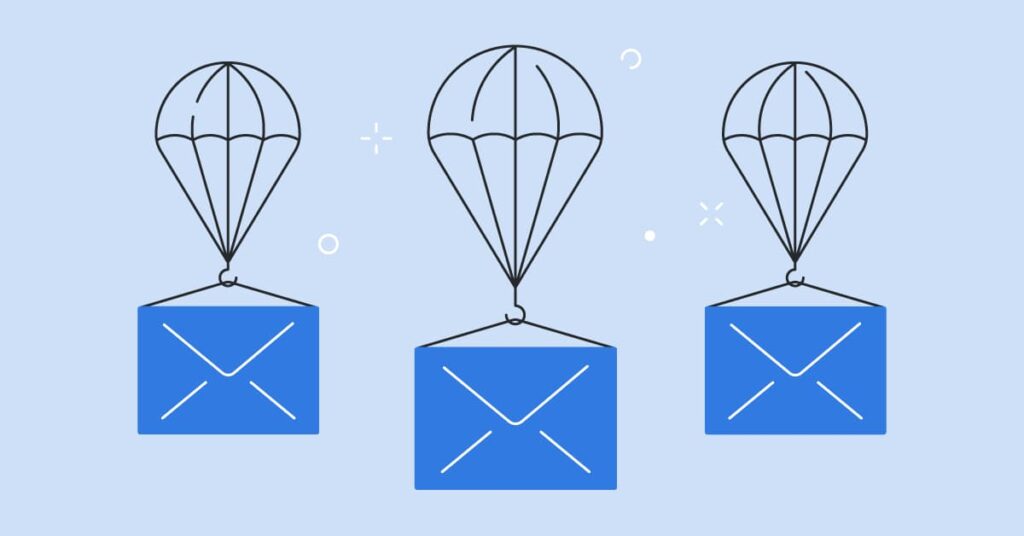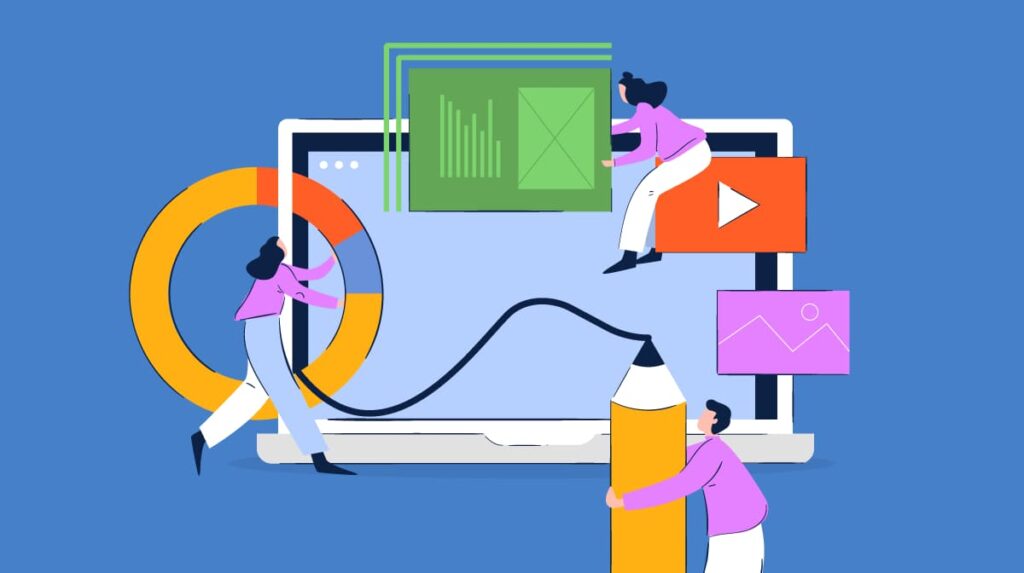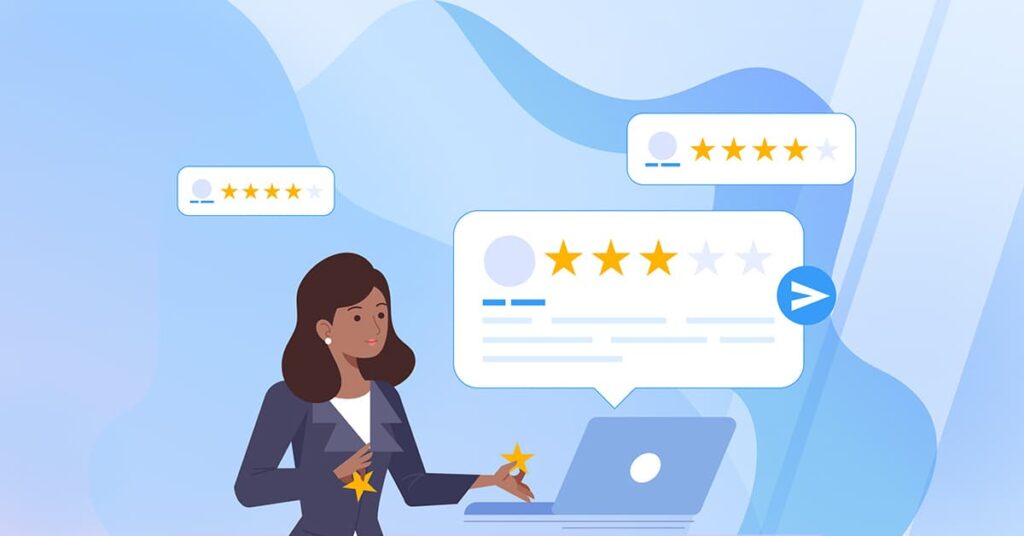Disclosure: Sportshubnet is supported by its audience. When you purchase through links on our site, we may earn an affiliate commission. Learn More.
In this post, we will check out the 10 email marketing tips to increase sales in 2023.
Email marketing is a powerful tool that can help businesses reach their target audience, increase brand awareness, and ultimately drive sales.
With the advent of new technologies and changes in consumer behavior, it is crucial to stay updated with the latest email marketing trends and best practices.
In 2023, email marketing is expected to continue to be a valuable strategy for businesses of all sizes.

To help you make the most of your email marketing campaigns this year, we have compiled a list of 10 tips to increase sales.
From personalization to automation, these tips will help optimize your emails for maximum engagement and conversion.
Whether you are just starting out with email marketing or are looking to take your campaigns to the next level, these tips will help you achieve your goals and drive revenue for your business. So, without further ado, let’s dive into the top 10 email marketing tips to increase sales for 2023.
Table of contents
- 1 Create a Targeted Email List
- 2 Reorganise Your Data
- 3 Measure Your Performance
- 4 Writing Compelling Subject Lines
- 5 Content is crucial
- 6 Send at the Best Time
- 7 Incorporating Social Proof
- 8 Automating Email Campaigns
- 9 Optimizing Email Design For Better Engagement
- 10 Reward More
- 11 Incorporate Personalization
10 Email Marketing Tips to Increase Sales In 2023
1 Create a Targeted Email List

Creating a targeted email list is one of the most important steps in successful email marketing. A targeted email list consists of individuals who have given you permission to send them emails and are interested in hearing from you.
These individuals are more likely to engage with your emails, resulting in higher open rates, click-through rates, and ultimately, sales.
To create a targeted email list, the first step is to define your target audience. Who are the people you want to reach with your emails?
What are their interests, demographics, and behaviors? By understanding your target audience, you can create more relevant and personalized emails that resonate with them.
Once you have defined your target audience, you can start building your email list. One way to do this is to create an opt-in form on your website or social media channels.
This form should ask for the person’s name and email address and give them the option to select their interests or preferences. This will help you segment your list and send more targeted emails.
Another way to build your email list is to offer a lead magnet, such as a free eBook, webinar, or discount code, in exchange for the person’s email address. This not only helps you build your list but also provides value to your potential subscribers.
It is important to note that building a targeted email list takes time and effort. It is better to have a smaller list of engaged subscribers than a large list of uninterested individuals. By creating a targeted email list, you can increase your chances of success and build a loyal customer base.
2 Reorganise Your Data

Data organization is a critical component of any successful business strategy. Whether you are collecting customer data, analyzing market trends, or monitoring your business performance, organizing your data is essential for making informed decisions and driving growth.
One way to organize your data is to create a centralized database or data warehouse. This allows you to store all your data in one place, making it easier to access, analyze, and share.
You can also use data visualization tools to create dashboards and reports that summarize your data and help you identify trends and patterns.
Another way to organize your data is to create a taxonomy or classification system. This involves grouping your data into categories or tags based on common attributes.
For example, you can categorize customer data by location, industry, or behavior. This makes it easier to segment your data and create targeted marketing campaigns.
Data cleansing is also an important step in data organization. This involves identifying and removing any duplicate, inaccurate, or outdated data. By cleaning your data, you can improve data quality, reduce errors, and make better decisions.
It is also important to establish data governance policies and procedures. This involves defining who can access, edit, and share your data, as well as establishing data security measures to protect against data breaches and cyber-attacks.
In summary, organizing your data is crucial for effective decision-making, improving business performance, and maintaining data accuracy and integrity.
3 Measure Your Performance
Measuring your performance is an essential aspect of any business strategy. By tracking your performance, you can identify areas for improvement, optimize your processes, and make informed decisions.
When it comes to measuring your performance in the context of marketing, there are several key metrics to consider.
One of the most important metrics to track is your return on investment (ROI). This involves comparing the revenue generated from your marketing campaigns to the cost of those campaigns.
By calculating your ROI, you can determine which campaigns are most effective and adjust your marketing budget accordingly.
Another important metric to track is your conversion rate. This involves measuring the percentage of website visitors who take a specific action, such as making a purchase or filling out a form.
By tracking your conversion rate, you can identify areas of your website that may need improvement and make adjustments to your marketing campaigns to increase conversions.
In addition to ROI and conversion rate, there are several other metrics to consider, such as click-through rate, bounce rate, and engagement rate.
By tracking these metrics, you can gain insights into how your audience is interacting with your content and make adjustments to improve engagement and retention.
It is important to note that measuring your performance is an ongoing process that requires regular monitoring and analysis. By tracking your metrics, you can make data-driven decisions and continuously improve your marketing strategy.
With the right tools and processes in place, you can gain a competitive advantage and achieve your business goals.
4 Writing Compelling Subject Lines
Writing compelling subject lines is crucial to the success of your email marketing campaigns. A subject line is the first thing that your subscribers will see when they receive your email, and it can make the difference between your email being opened or ignored. A good subject line should be attention-grabbing, informative, and relevant to your audience.
One way to write compelling subject lines is to keep them short and concise. The ideal length for a subject line is between 30-50 characters.
This ensures that your subject line will be fully visible on most devices and platforms, and it will also make it easier for your subscribers to quickly understand what your email is about.
Another way to write compelling subject lines is to use action-oriented language. This involves using verbs and phrases that encourage your subscribers to take action, such as “Don’t miss out on this deal” or “Limited time offer”.
By using action-oriented language, you can create a sense of urgency and motivate your subscribers to open your email and take the desired action.
Personalization is another effective strategy for writing compelling subject lines. This involves using your subscriber’s name or other personal information in your subject line to make it more relevant and engaging.
For example, “Hey John, check out our new product” is more likely to grab John’s attention than a generic subject line that does not address him personally.
Finally, it is important to avoid using spammy or misleading language in your subject lines. This includes using all caps, excessive punctuation, or making false promises. Not only can these tactics damage your brand reputation, but they can also result in your emails being marked as spam and sent to the junk folder.
By following these tips for writing compelling subject lines, you can increase the likelihood of your emails being opened and read by your subscribers.
5 Content is crucial

Content is one of the most crucial components of any marketing strategy. Your content is what engages your audience, communicates your brand message, and ultimately drives conversions.
Whether you are creating blog posts, social media posts, or email marketing campaigns, your content should be high-quality, relevant, and valuable to your target audience.
One way to create high-quality content is to focus on your audience’s needs and interests. Your content should provide value to your audience by answering their questions, addressing their pain points, or providing them with useful information. By doing so, you can establish yourself as a thought leader in your industry and build trust with your audience.
Another important aspect of content creation is consistency. Your content should be published on a regular schedule, whether that be daily, weekly, or monthly. By maintaining a consistent content schedule, you can keep your audience engaged and build momentum over time.
It is also important to optimize your content for search engines. This involves using keywords, meta descriptions, and other on-page optimization techniques to make your content more discoverable in search engine results pages. By optimizing your content for search engines, you can increase your organic traffic and reach a wider audience.
Finally, it is important to measure the performance of your content and make adjustments as needed. By tracking metrics such as page views, bounce rate, and engagement rate, you can identify areas for improvement and optimize your content strategy for better results.
Overall, content is crucial to the success of your marketing strategy. By creating high-quality, valuable content that resonates with your audience, you can establish yourself as a thought leader in your industry, build trust with your audience, and ultimately drive conversions.
6 Send at the Best Time
Sending your emails at the best time is a key factor in the success of your email marketing campaigns. The best time to send your emails will depend on your audience and their habits, so it is important to do some research and testing to determine the optimal time for your specific audience.
One way to determine the best time to send your emails is to analyze your email open rates over time. Look for patterns in your open rates and see if there are certain days or times that consistently perform better than others. You can also segment your email list by time zone or other demographics to better understand the habits of your audience.
Another way to determine the best time to send your emails is to consider the type of content you are sending. For example, if you are sending a promotional email with a limited-time offer, it may be best to send it during business hours when your audience is more likely to be at their computers.
On the other hand, if you are sending a newsletter with educational content, it may be best to send it in the evening or on the weekend when your audience has more time to read and engage with your content.
It is also important to keep in mind that the best time to send your emails may change over time as your audience and their habits evolve. Be sure to regularly monitor your email performance and adjust your send times as needed.
In addition to sending your emails at the best time, it is important to also consider other factors such as the subject line, content, and design of your emails.
By creating high-quality, engaging emails that are relevant to your audience, you can increase your open rates and drive conversions, regardless of the time of day that you send them.
7 Incorporating Social Proof

Incorporating social proof into your email marketing campaigns can be a powerful way to build trust with your audience and drive conversions. Social proof refers to the idea that people are more likely to take action when they see that others have already done so.
By showcasing positive reviews, testimonials, or other forms of social proof, you can demonstrate the value of your products or services and encourage your audience to take action.
One way to incorporate social proof into your email marketing is to include customer reviews or testimonials in your emails. You can feature quotes from satisfied customers, share success stories, or even include user-generated content such as photos or videos.
By showcasing real-life examples of how your products or services have helped others, you can build credibility and trust with your audience.
Another way to incorporate social proof is to highlight any awards, certifications, or other forms of recognition that your business has received.
This can help to establish your brand as a leader in your industry and further build trust with your audience.
It is also important to consider the placement of your social proof within your emails. Ideally, you should place your social proof near your call to action to reinforce the value of your products or services and encourage your audience to take action.
Finally, it is important to ensure that your social proof is authentic and relevant to your audience. Avoid using fake or manipulated reviews, and make sure that your social proof aligns with the interests and needs of your audience.
Overall, incorporating social proof into your email marketing campaigns can be a powerful way to build trust with your audience and drive conversions.
By showcasing real-life examples of the value of your products or services, you can establish yourself as a trusted authority in your industry and encourage your audience to take action.
8 Automating Email Campaigns
Automating your email campaigns can save you time and increase the effectiveness of your email marketing efforts.
Email automation refers to the use of technology to automatically send targeted messages to your audience based on specific triggers or actions.
One common type of email automation is the use of autoresponders. Autoresponders are pre-written emails that are sent to subscribers based on specific triggers, such as signing up for your newsletter or making a purchase.
By using autoresponders, you can deliver targeted, personalized messages to your audience without the need for manual intervention.
Another type of email automation is triggered email campaigns. Triggered email campaigns are sent to subscribers based on specific actions or behaviors, such as abandoning a shopping cart or viewing a particular product.
By sending targeted messages based on specific actions, you can deliver relevant, personalized content to your audience and increase the likelihood of conversion.
In addition to saving time and increasing effectiveness, email automation also allows you to track and analyze the performance of your campaigns more easily.
By monitoring metrics such as open rates, click-through rates, and conversion rates, you can identify areas for improvement and optimize your campaigns for better results.
When automating your email campaigns, it is important to ensure that your messages are relevant and valuable to your audience.
Avoid sending generic or overly promotional messages, and focus on providing value and addressing the needs of your subscribers.
Overall, automating your email campaigns can be a powerful way to save time and increase the effectiveness of your email marketing efforts.
By delivering targeted, personalized messages to your audience based on specific triggers or actions, you can increase engagement, build relationships, and ultimately drive conversions.
9 Optimizing Email Design For Better Engagement
Optimizing the design of your emails is an important factor in increasing engagement and driving conversions.
A well-designed email can grab the attention of your audience, showcase the value of your products or services, and encourage them to take action. Here are some tips for optimizing your email design for better engagement:
- Keep it simple: Avoid cluttered designs and focus on a clean, simple layout that is easy to read and navigate. Use clear headings and subheadings to break up your content and make it easy to scan.
- Use visuals strategically: Visuals such as images and videos can be powerful tools for engaging your audience. Use high-quality visuals that are relevant to your content and enhance the overall message of your email.
- Make it mobile-friendly: With more people accessing emails on mobile devices, it is important to ensure that your emails are optimized for mobile viewing. Use a responsive design that adjusts to different screen sizes and keeps your content concise and easy to read on small screens.
- Use color strategically: Color can be a powerful tool for creating a visual hierarchy and drawing attention to important elements of your email. Use colors that align with your brand and use them strategically to highlight key messages and calls to action.
- Prioritize your call-to-action: Your call-to-action (CTA) is one of the most important elements of your email design. Make sure it stands out visually and is placed prominently within your email. Use clear, action-oriented language that encourages your audience to take the next step.
- Test and optimize: As with any aspect of your email marketing, it is important to test and optimize your design for better results. Use A/B testing to experiment with different design elements such as colors, images, and layouts, and monitor your metrics to identify areas for improvement.
By optimizing your email design for better engagement, you can increase the effectiveness of your email marketing campaigns and drive more conversions.
By keeping your design simple, using visuals strategically, making it mobile-friendly, using color strategically, prioritizing your call-to-action, and testing and optimizing your design, you can create emails that grab the attention of your audience and encourage them to take action.
10 Reward More
One effective way to increase engagement and drive conversions in your email marketing campaigns is to reward your subscribers.
By offering incentives such as discounts, freebies, or exclusive content, you can show your subscribers that you value their loyalty and encourage them to take action.
Here are some tips for rewarding your subscribers:
- Offer exclusive content: Consider offering exclusive content such as ebooks, whitepapers, or webinars that provide value to your subscribers. This can help to build trust and establish you as an authority in your industry.
- Provide early access: Consider providing early access to new products or services to your subscribers as a way to reward their loyalty. This can create a sense of exclusivity and make your subscribers feel valued.
- Use personalized offers: Use data from your subscribers to create personalized offers that are tailored to their interests and preferences. This can increase the effectiveness of your offers and encourage more conversions.
- Provide discounts and freebies: Consider offering discounts or freebies to your subscribers as a way to encourage them to make a purchase or take action. This can be an effective way to drive conversions and increase engagement.
- Create a loyalty program: Consider creating a loyalty program that rewards your subscribers for their continued engagement and purchases. This can help to build long-term relationships with your audience and increase customer retention.
By rewarding your subscribers, you can increase engagement, build trust, and drive conversions in your email marketing campaigns.
Whether you offer exclusive content, provide early access, use personalized offers, provide discounts and freebies, or create a loyalty program, there are many ways to show your subscribers that you value their loyalty and encourage them to take action.
11 Incorporate Personalization

Incorporating personalization into your email marketing campaigns is a powerful way to increase engagement and drive conversions.
By using data from your subscribers to tailor your content and offers, you can create a more personalized experience that resonates with your audience.
Here are some tips for incorporating personalization into your email marketing:
- Use subscriber data: Use data such as demographics, past purchases, and website behavior to create targeted email campaigns that are tailored to the interests and preferences of your subscribers.
- Personalize subject lines and greetings: Use your subscribers’ names in the subject line and greeting of your emails to create a more personal and engaging experience.
- Segment your lists: Divide your email list into segments based on subscriber behavior, interests, and demographics. This can help you to create targeted campaigns that are more likely to resonate with your audience.
- Use dynamic content: Use dynamic content to display different images, text, and offers based on subscriber data. This can help to create a more personalized experience and increase engagement.
- Use triggered emails: Use triggered emails to send targeted messages based on subscriber behavior. For example, you could send a follow-up email to a subscriber who has abandoned their cart or a re-engagement email to a subscriber who has not opened your emails in a while.
By incorporating personalization into your email marketing campaigns, you can increase engagement, build trust, and drive conversions.
By using subscriber data, personalizing subject lines and greetings, segmenting your lists, using dynamic content, and using triggered emails, you can create a more personalized experience that resonates with your audience and encourages them to take action.
Inbox looking a bit bland?
Better sign up to our blog to cram it full of trending Sports, Gaming & Tech updates.




